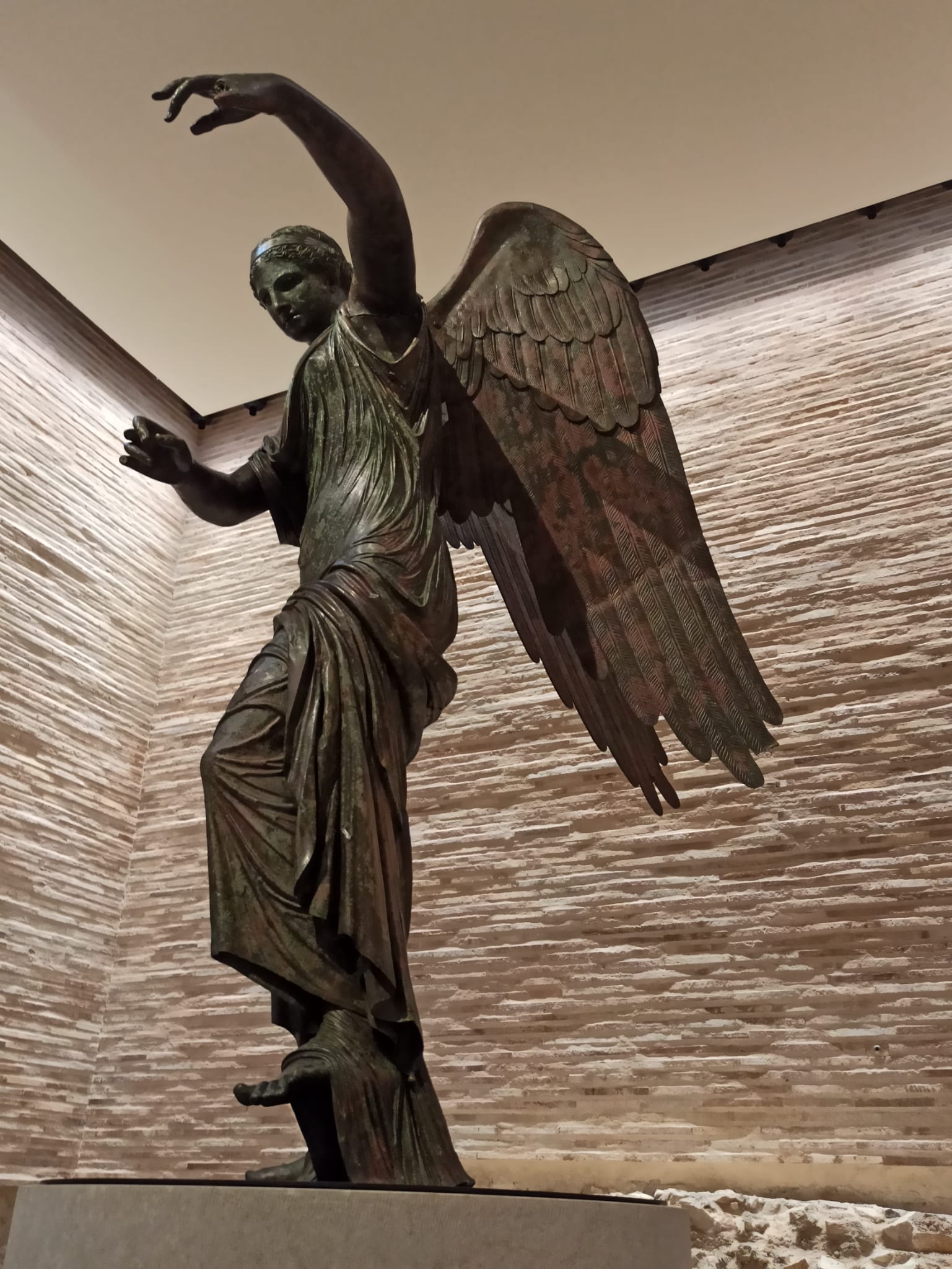The “Vittoria Alata” (Winged Victory) from Brescia in Italy is a treasured bronze statue dating from around the 1st Century BCE. Discovered underneath the Capitolium of Brescia in 1826, the 1.94m tall statue has since become a symbol of the city and gained international renown as an icon of victory. While the statue was undergoing restoration work coordinated by Opificio delle Pietre Dure di Firenze (OPD) and Soprintendenza Archeologica di Brescia, an Italian team of researchers (from Consiglio Nazionale delle Ricerche (CNR) University of Florence (UNIFI) and OPD) turned to the ISIS Neutron and Muon Source to study the metal alloy composition and manufacturing methods of the artefact.

Since the imposing statue exhibiting the legendary traits of the Goddess was unearthed, scholars sought to understand the work’s enigmatic past. Almost 200 years after its discovery, the Vittoria Alata returned to the spotlight - a restoration brought back its ancient splendour and a new, scenographic display saw it return to the location where it was found. The event received coverage in national and international press.
In addition to using Scanning Electron Microscopy analysis at the OPD Lab in Florence, the team used Time-of-Flight Neutron Diffraction (ToF-ND) and Neutron Imaging (NI) techniques on millimetre sized samples from the statue. Two larger samples, a feather fragment detached from the right wings, and a frame were also analysed. Neutron methods are particularly well suited to studying metallic ancient artefact samples because they allow for a non-invasive characterisation of the bulk structure despite surface corrosion.
Neutron diffraction and imaging lend themselves very well to investigating metallic artefacts, as they can reveal the original metal matrix, and its corrosion products, whilst simultaneously providing a wealth of additional insights about the nature of the material and its manufacturing methods.
From the results of ToF-ND experiments performed using our INES instrument, and Neutron Radiography performed at IMAT, researchers were able to characterise and quantify the crystalline phases, gaining insight into the microstructure and composition of the metal the statue is made of (alloy chemical composition, texture, defect density, crystallographic grain size). This information sheds new light on the casting and soldering processes used in ancient times.
Having analysed samples from nearly every part of the statue, researchers found that the ancient forgers used more compression resistant alloys for the base of the statue, and softer alloys for the most delicate parts, such as the torso. Their analysis also uncovered clues about the order in which different components of the statue were cast and joined together.
Commenting on the findings from the study, Antonella Scherillo, INES instrument scientist said, “I am glad neutrons contributed to shed light on the fact that the parts of the statue, including wings, were cast at the same time, and therefore confirm it was intended from the beginning to represent a Winged Victory and not an Aphrodite modified at a later stage.”
“I had the opportunity to participate in all phases of this project from the diagnostic campaign in the Opifico delle Pietre Dure laboratories to the experimental session at ISIS.” Said co-lead author Francesco Cantini summarised his experience working on the project. “The possibility of exploiting neutrons as a complementary technique for the characterization of this unique masterpiece was certainly one of the key elements that allowed the technological characterization of the Statue.”
